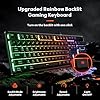Table of Contents
Developing a Good Sense of Rhythm on the Piano
Mastering the piano requires more than just hitting the right notes; it demands a profound sense of rhythm. Rhythm acts as the spine of music, giving it structure and flow. Whether you are a beginner or an advanced player, developing a good sense of rhythm is essential for bringing musical pieces to life. This introduction explores the foundational aspects of rhythm and its importance in piano playing. We will delve into why a robust rhythmic sense is crucial not just for solo performance but also for ensemble work, where timing and coordination with others are paramount.
Introduction to Basic Rhythmic Notation
Developing a strong sense of rhythm on the piano begins with understanding basic rhythmic notation. This foundational knowledge allows pianists to accurately interpret and execute the rhythms written in sheet music. Below, we explore the key components of rhythmic notation, providing a clear starting point for learners aiming to enhance their rhythmic skills.
Logitech MK270 Wireless Keyboard and Mouse Combo for Windows, 2.4 GHz, 8 Multimedia Keys, PC, Laptop, Wireless Keyboard Compact Mouse Combo - Black
23% OffRedragon K521 Upgrade Rainbow LED Gaming Keyboard, 104 Keys Wired Mechanical Feeling Keyboard with Multimedia Keys, One-Touch Backlit, Anti-Ghosting, Compatible with PC, Mac, PS4/5, Xbox
20% OffLogitech K270 Wireless Keyboard for Windows, 2.4 GHz Wireless, Full-Size, Number Pad, 8 Multimedia Keys, 2-Year Battery Life, Compatible with PC, Laptop, Black
33% OffEPOMAKER x Aula F75 Gasket Mechanical Keyboard, 75% Wireless Hot Swappable Gaming Keyboard with Five-Layer Padding&Knob, Bluetooth/2.4GHz/USB-C, RGB (Light Blue, LEOBOG Reaper Switch)
16% OffNote Values
Note values indicate the duration of a sound or silence in music. The most common note values include the whole note, half note, quarter note, eighth note, and sixteenth note. Each note value has a corresponding rest that indicates silence of the same duration. Understanding these will allow you to grasp how long to hold down a key or how long to pause.
Time Signature
The time signature is found at the beginning of a piece and it dictates how the music is counted. It consists of two numbers; the top number indicates how many beats are in a measure, while the bottom number represents the note value that equals one beat. Common time signatures include 4/4, 3/4, and 6/8. Mastering different time signatures is crucial for developing timing and rhythm.
Tempo
Tempo refers to the speed at which a piece of music is played. It is typically indicated at the start of a score and can be described either by specific beats per minute (BPM) or using traditional Italian terms like Allegro (fast), Moderato (moderate), or Adagio (slow). Adapting to different tempos is essential for playing music expressively.
Rhythmic Patterns
Rhythmic patterns are sequences of notes and rests that occur throughout a piece. These patterns can vary greatly in complexity, from simple, steady beats to complex syncopations and combinations of different note values. Practicing a variety of rhythmic patterns helps in building a versatile rhythmic sense, suitable for different styles and genres.
RockJam 49 Key Keyboard Piano,Sheet Music Stand, Piano Note Stickers & Simply Piano Lessons
42% Off $62.99 (as of December 27, 2025 17:11 GMT -08:00 - More infoProduct prices and availability are accurate as of the date/time indicated and are subject to change. Any price and availability information displayed on [relevant Amazon Site(s), as applicable] at the time of purchase will apply to the purchase of this product.)RockJam 61 Key Keyboard Piano Stand With Pitch Bend Kit, Piano Bench, Headphones, Simply Piano App & Keynote Stickers
$124.56 (as of December 27, 2025 17:11 GMT -08:00 - More infoProduct prices and availability are accurate as of the date/time indicated and are subject to change. Any price and availability information displayed on [relevant Amazon Site(s), as applicable] at the time of purchase will apply to the purchase of this product.)Piano Star
$0.00 (as of December 27, 2025 17:46 GMT -08:00 - More infoProduct prices and availability are accurate as of the date/time indicated and are subject to change. Any price and availability information displayed on [relevant Amazon Site(s), as applicable] at the time of purchase will apply to the purchase of this product.)Best Choice Products 61-Key Electronic Keyboard Piano Portable Electric Keyboard Complete Beginner Set w/LED Screen, Stand, Bench, Headphones - Black
7% OffBars and Measures
Music is divided into sections called measures, or bars, which contain a set number of beats, as determined by the time signature. Each bar is separated by a vertical line on the staff. Recognizing and counting bars is fundamental for maintaining rhythm and ensuring that you are in sync with other musicians.
Clapping Exercises to Improve Timing
Developing a strong sense of rhythm is essential for any pianist. Here are some effective clapping exercises designed to enhance your timing and rhythmic accuracy.
Start by setting a metronome to a comfortable tempo. Clap along with each tick of the metronome. Focus on precision, trying to synchronize your claps exactly with each beat. Gradually increase the speed as your accuracy improves. This exercise helps in developing a steady pulse.
Listen to a rhythm being played or clapped by a teacher or from an audio source. After listening, clap back the same rhythm. The key here is to remember the rhythm pattern and replicate it exactly. Repeat this exercise with different rhythms to enhance rhythmic memory and flexibility.
With the metronome on, clap a predetermined rhythm pattern and simultaneously count the beats out loud. This can be complex rhythms involving different note values like whole notes, half notes, quarter notes, eighth notes, and rests. This exercise aids in understanding how different note values feel and fit within a given tempo.
Instead of playing, clap through the rhythms of scales and arpeggios. Emphasize clapping stronger on the downbeat and softer on the upbeat, helping enhance the sense of strong and weak beats in music.
Works effectively in a group or with a partner. One person claps a short rhythmic pattern, and the others clap back the same rhythm. This not only improves timing but also aids in listening skills and rhythmic reaction time.
Understanding and Playing Basic Rhythmic Patterns
Begin by mastering simple rhythmic patterns such as quarter notes, eighth notes, and half notes. Practice these by using a metronome to keep your timing consistent. Start slow and gradually increase the tempo as you become more comfortable. For instance, count out loud “1-2-3-4” for quarter notes, saying each number as you press a key, and “1-and-2-and-3-and-4-and” for eighth notes.
Incorporating Syncopation into Your Playing
Syncopation involves placing emphasis on beats that are usually not emphasized. Begin by playing a simple chord progression and stress the off-beats. For example, if you’re playing in 4/4 time, try accentuating the “and” of each count (1-and-2-and-3-and-4-and). This practice helps in developing coordination and a more nuanced sense of timing.
Using Dotted Rhythms and Ties
Dotted rhythms add variety and complexity to your playing. A dotted quarter note followed by an eighth note is a common pattern. Practice this by playing the dotted quarter note and holding it for one and a half counts, then playing the eighth note on the “and” of the second count. Ties can also be used to extend a note across a bar line or within a measure, which is great for smoothing transitions between notes.
Experimenting with Time Signatures
Vary your practice by playing in different time signatures. Common time signatures include 4/4, 3/4, and 6/8. Each has its own feel and flowing method. For instance, a waltz is typically in 3/4 time, giving it a sway-like rhythm as you count “1-2-3, 1-2-3.” Contrastingly, 6/8 time gives a more rolling feel, counted as “1-2-3-4-5-6,” with emphasis usually on the first and fourth beats.
Applying Polyrhythms
Polyrhythms occur when two contrasting rhythms are played simultaneously. Start simple, with one hand playing a steady quarter note beat while the other plays eighth notes. As you feel more comfortable, experiment by incorporating triplets with one hand against duplets in the other or playing a 3/4 pattern against a 4/4 pattern. This technique is challenging but greatly enhances rhythmic understanding and capability.
Practical Application Through Repertoire and Improvisation
Apply what you’ve learned by playing pieces that incorporate various rhythmic patterns. Also, try improvising using the rhythms you’ve practiced. This not only tests your skill in maintaining rhythm but also in creatively expressing it. Choose pieces from different genres to enrich your understanding and adaptability to varied rhythmic styles.
Using a Metronome to Maintain Steady Tempo
A metronome is an essential tool for pianists aiming to develop a strong sense of rhythm and timing. This device keeps a consistent beat, helping you to play at a steady tempo. When beginning to learn a new piece, set the metronome to a slow speed that allows you to manage the notes and rhythms comfortably. As you become more familiar with the piece, gradually increase the speed of the metronome to challenge your skills and match the intended tempo of the piece.
Regular practice with a metronome can significantly improve your rhythmic accuracy and consistency. Start by focusing on maintaining synchronization with the click of the metronome. It’s crucial to not just hear the metronome but to internalize the tempo it provides. This practice aids in developing an internal metronome, enhancing your ability to keep time even without the device.
Utilizing different metronome settings can also be beneficial. Most modern metronomes offer a variety of time signatures and rhythmic patterns. Experimenting with these features can help you understand and perform complex rhythms more confidently. Moreover, using the metronome during scales and arpeggio practice can further solidify your timing and technique.
Advanced metronome techniques include practicing with the metronome set on beats other than the strong beats of the measure. For instance, setting it to click on the second or third beat can challenge your ability to maintain the pulse independently, fostering stronger rhythmic independence.
To fully reap the benefits of a metronome, consistency is key. Incorporate metronome practice regularly into your practice sessions, and be patient with the process. It may take some time to feel comfortable and confident with your rhythm, but the persistence will pay off.
Incorporating Rhythm into Your Practice Routine
Developing a strong sense of rhythm is crucial for any pianist. Here are several techniques to effectively incorporate rhythm into your piano practice routine:
One of the most effective tools for rhythm development is the metronome. Start by setting the metronome to a comfortable tempo and play along to ensure tight synchronization with the beat. Gradually increase the speed as you become more proficient, maintaining accuracy and precision.
Employing rhythmic solfege involves vocalizing rhythms using syllables (like “ta” for quarter notes and “ti-ti” for eighth notes). This practice helps internalize rhythms before playing them on the piano. Vocalizing complex rhythms makes them easier to understand and execute when transitioning to the keyboard.
Before playing pieces on the piano, try clapping out the rhythms while counting aloud. This method reinforces the rhythmic pattern and helps ensure each note is placed correctly within the measure. It aids in developing a more intuitive feeling for timing and rhythm.
Playing rhythms slowly can profoundly enhance accuracy and understanding. Begin by practicing difficult rhythmic passages at a slow tempo, focusing on the precision of each note’s onset and duration. Once mastered slowly, gradually increase the tempo to the piece’s intended speed.
Playing with other musicians can be incredibly beneficial. Ensemble settings force players to maintain a consistent tempo and adapt to the collective rhythm. This can be practiced even with other pianists or different instrumentalists, fostering adaptability and rhythmic accuracy.
Incorporate specific rhythm exercises in your practice sessions. Many books and online resources offer exercises designed to challenge and improve rhythmic understanding and execution. Regular practice using these exercises will develop a more acute sense of timing and rhythmical contrast.
Recording your own playing and listening back can provide critical insights into your rhythmic precision. Listening analytically to how well the rhythm aligns with a metronome or backing track can help identify areas needing improvement.
Utilize educational technology such as apps and software designed to improve rhythmic skills. Tools like GarageBand, Soundtrap, or specific metronome apps offer interactive ways to engage with rhythms, providing feedback and structured challenges that adapt to your skill level.
Engaging your body through dancing or even simple foot-tapping can improve your sense of rhythm. Feeling the beat physically can help solidify the rhythmic feel, particularly with complex or syncopated rhythms that are challenging on the piano.
Conclusion
Developing a good sense of rhythm on the piano is crucial for any pianist aiming for musical competency and expression. A strong rhythmical foundation allows easier learning of new pieces, enhanced musicality, and more effective communication with audiences. Regular practice with a metronome, along with varied rhythm exercises and ensemble playing, is essential. Patience and persistence in these methods will yield a natural and confident rhythmical playing style, transforming practice into performance. Thus, investing time in mastering rhythm is indispensable for any aspiring or professional pianist.
































































